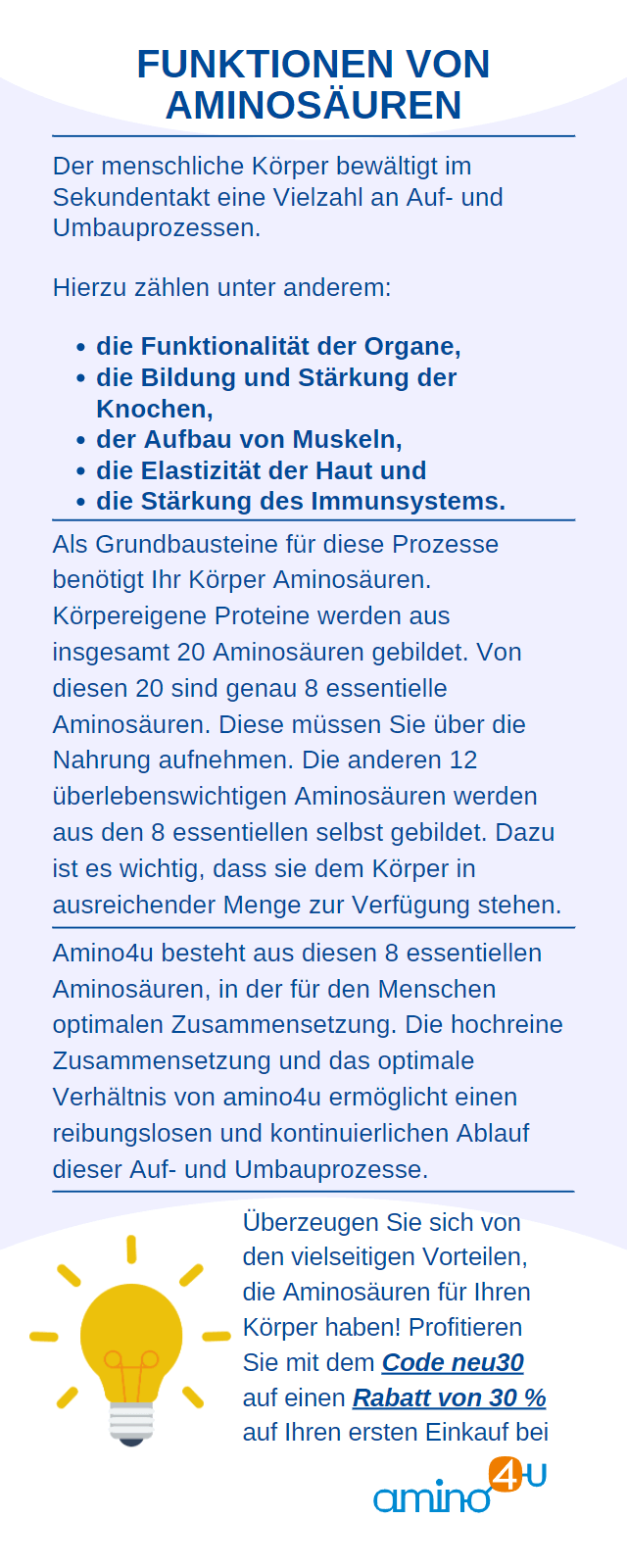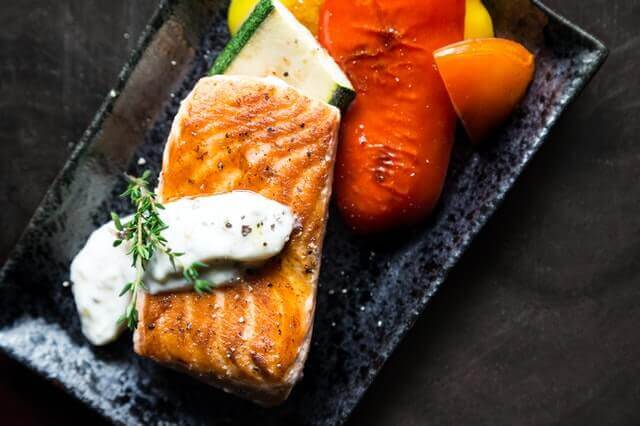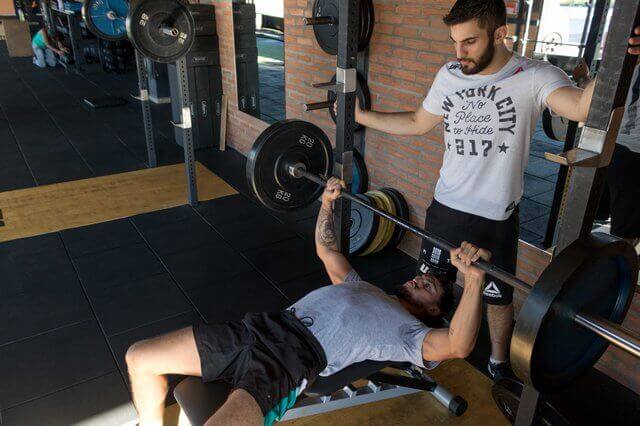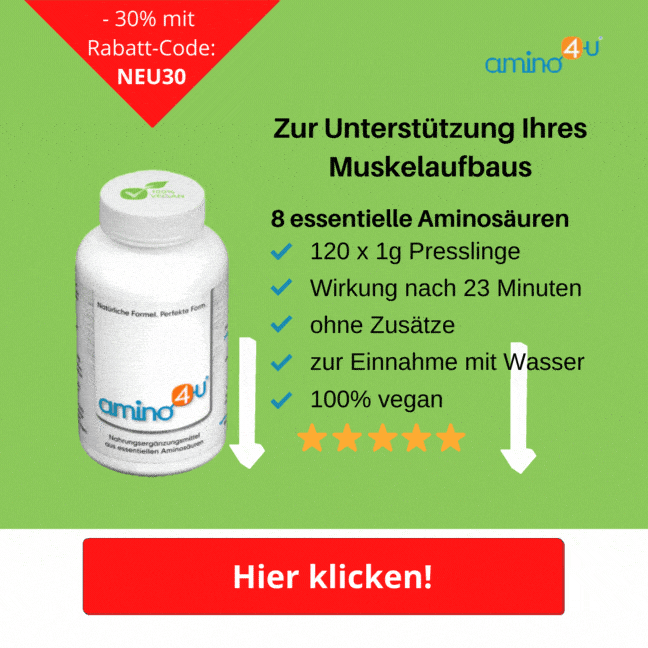Necessary to effectively build muscle mass or just overrated and not necessary? Opinions differ in the weight training sector when it comes to the so-called mass phase - also known as the bulking phase.
There are both supporters and critics. At the center of the discussion is always the question of the extent to which mass phases actually promote and accelerate the process of building muscle.
What exactly is a mass phase?
In strength training, the bulking phase is a specific period of time in which a bodybuilder aims for a calorie surplus of up to 35 calories per kilogram of his own body weight.
This is intended to build body mass in order to provide enough building material for muscle building during targeted training. During this phase, strength athletes eat up to seven meals.
Dietary supplements are often also used to support rapid weight gain . These are the so-called weight gainers or muscle building preparations .
As a rule, the classic bulking phase includes one Period of around three to nine months. The calorie surplus generated in the mass phase should also guarantee optimal muscle supply and avert the risk of muscle undersupply.
A bulking phase is usually followed immediately by the definition phase (in short: defiphase). During this phase, you will then reduce the unwanted body fat you have built up and thus visibly show off your muscles.
How do these mass phases work?
Basically, the larger the surplus of calories, the fattier the body mass will become . When building mass, you can choose between two different bulking options.
The two available methods differ in the approach used to ensure weight gain.
-
Clean bulking
This bulking method focuses on gradual weight gain . To implement this, as a strength athlete you determine exactly how many calories and macronutrients you supply to your body through your diet.
The aim is to achieve almost fat-free muscle building. For this variant you need a high degree of discipline, as you always have to pay strict and consistent attention to the right diet. It's about building mass while minimizing fat gain .
-
Dirty bulking
Strength athletes who are aiming to gain weight quickly , on the other hand, sometimes opt for what is known as “ dirty bulking ”.
The advantage of dirty bulking is that you can basically eat whatever you want. Therefore, in this case, fast food, sweets, etc. can be on the menu for many strength athletes.
So there is plenty of calorie surplus. However, you also consume a correspondingly high amount of fat and neglect the health aspects of your diet .
You should also always keep in mind that once fat cells have been built up, they can only be emptied later, but can no longer be generally broken down.
What period of time is optimal for a bulking phase?
There is no precisely defined time frame for the phases. In practice, strength athletes carry out their bulking sessions for at least three and a maximum of nine months.
The optimal time frame always depends on how much muscle mass you want to build and how your muscle memory works. The latter always depends on how often you have previously gone through a bulking phase.
Anyone who has already carried out a mass phase of this type several times will achieve visible success more quickly. This is due to the so-called muscle memory, which ensures the muscles react faster.
If you are just starting to build your muscles using the phase principle, you should extend the bulking phase over a longer period of time, up to a maximum of nine months.
Significantly shorter time intervals, on the other hand, can potentially cause your body as a whole to become too fatty.

What should the diet consist of in the mass phase?
In order to actually build muscle mass effectively and not just gain fat, you should always follow an individually tailored mass phase nutrition plan .
In such a plan you record which foods you eat, in what quantities and at what time. However, if you don't set rules when it comes to nutrition , you may be wasting a lot of potential.
You also run the risk of your body fat percentage skyrocketing. On the one hand, your diet in the bulking phase should always be performance-oriented and have the highest possible nutrient content .
Pizza, chocolate, gummy bears or chips promote fat deposits and also mass gain, but they do less to help build muscle.
Rather, they require:
- Proteins or proteins and amino acids
- Omega-3 fatty acids and other good fats
- long chain carbohydrates
- micronutrients
- Vitamins, minerals, trace elements
- secondary plant substances
Proteins are considered the most important driver for building mass . During bulking phases, you should consume between 1.8 and two grams of protein per kilogram of body weight.
Also pay attention to the intake of amino acids to optimally support muscle building .
What is on the menu during the mass phase?
If you focus on “ clean bulking ”, you should preferably focus on natural and energy-rich foods:
- lowfat quark
- Dairy products
- starchy vegetables and other vegetables
- legumes
- high-calorie fruits and nuts and seeds
These foods are among the staple foods that are (more or less) indispensable.
In addition, many bodybuilders eat beef with a high fat content, pork tenderloin, venison, poultry, beans, grain products and oily fish on the menu.
For example, you can use olive oil or coconut oil for cooking. You can also include butter in your mass phase nutrition plan. However, you should avoid foods rich in sugar, fried foods and alcohol.
How many calories should you ideally consume?
The ideal calorie surplus is around ten to 20 percent of the normal daily requirement. In order to make the right nutrition and training decisions , you should always determine your own calorie needs in advance.
You can do this using various formulas that can be used to at least roughly calculate the calorie requirement. It's a little easier with an online calorie calculator or, for example, with a high-quality fitness tracker.
To build muscle mass while reducing fat gain, a moderate excess of around 250 to 500 additional calories per day is an ideal choice.
With regard to the composition of the diet, fats should not contain more than 25 percent of the total number of calories and should always make up at least one gram per kilogram of body weight.
If the value of one gram per kilogram is not reached, this can negatively affect your hormone production. However, when it comes to fats, it's not just the amount you consume that's important, but also what type of fat you consume through your diet.

Mass phase and training: How high should the training intensity be?
The human body can only gain a maximum of 150 to 250 grams of mass per week . And only if the diet is tailored precisely to this goal and your body or muscles receive the appropriate growth stimuli through intensive training.
Your mass phase training should primarily include complex movements and multi-joint exercises, such as compound lifting applications (squats, deadlifts, bench presses, etc.).
These exercises are aimed at the whole body and are highly effective. Training sessions of this type are then followed by easier isolation movements such as biceps curls.
Use up to 90 percent of your own maximum strength during training sessions
During the mass phase, you should use a maximum of 85 to 90 percent of your maximum strength in your training exercises . You can achieve maximum stimulation, for example, through heavy basic exercises and training with free weights.
You can use effective training principles such as the push & pull method, in which you load your muscles with several exercises per day (or several times per week).
The 2-way split and the 3-way split are popular training methods here. You shouldn't just keep an eye on the days and the exercises.
Split training sessions and combinations for increased success
Targeted and joint training of main and supporting muscles is also an important success factor in order to maximally stimulate the often neglected supporting muscles.
A typical example of this is chest muscle training. This is how you train this main muscle, especially through the bench press . Since the pectoral muscles support the triceps and front shoulders in their work, you can train these muscle groups together.

The regeneration time acts like a booster
Just as important as the accompanying training for the mass phase is the optimal regeneration of the muscles after the respective training sessions.
Especially in the bulking phase, your body needs sufficient rest periods to build muscle. Workouts that are too hard and too long could be counterproductive. If you constantly train to the limit, your body won't recover properly.
As a result, you lack energy and strength, which manifests itself in poorer training sessions and thus also in reduced muscle mass growth .
When used correctly, you can benefit from the bulking phase
The mass phase, in conjunction with the following definition phase, contributes to faster muscle building. However, if rapid muscle building is your goal, you should not overdo it during such a phase.
Neither with training nor with eating. What is important here is a well-founded nutrition plan for building muscle that provides your body with the right components or the right food to build muscle mass. as well as training units that are based, for example, on the push & pull method.
The big danger in a mass phase is in the details. If you eat too much and the wrong foods, you will gain a lot of body fat. These fat cells can stay forever.




